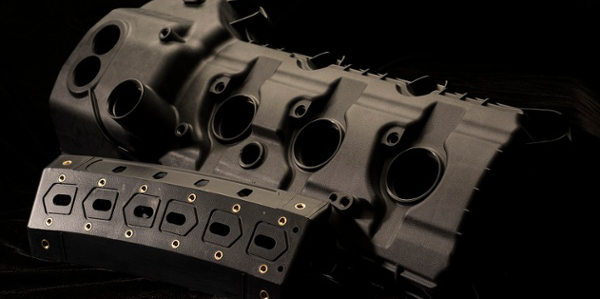9 Reasons to Consider Induction Heating for Manufacturing
In today’s manufacturing landscape, efficiency, precision, and sustainability are critical. Induction heating—a process that uses electromagnetic...
Processes
Processes: More
Processes: More

Industries:
Industries: More
Industries: More
Industries: More

Products:
Products: More
Services:
Services: More

Learn:
Learn: More
About:


Heat staking, also known as metal-to-plastic insertion or indirect induction heating, involves preheating an insert with induction and then pressing the hot insert into a hole in a plastic part. This is accomplished by positioning the induction coil over the hole and then holding the insert in the coil for a short period of time. When the correct temperature is achieved, the insert is pressed into the plastic. A narrow zone of plastic then melts and flows into the knurls of the insert. The plastic re-solidifies resulting in a complete assembly that often has much better mechanical properties than what results from alternative heating methods. The inserts are often brass or steel.
With induction systems you can count on the same result every time, which makes for highly repeatable heat staking processes.
Movable workheads (or heat stations) can be placed right on the production line, and up to 200 ft (61 m) away from the power supply itself depending on the application. This means much less space is required than some alternative heating methods require.
A multiple-position coil makes it possible to install more than one insert at a time into a single plastic part. Three- and four-position coils have often been used for this application.
The aforementioned ability to place the workhead or heat station a distance from the power supply and induction systems' ability to be integrated into manufacturing controls with PLC and analog inputs makes induction ideal for integration in manufacturing processes.
Induction offers instant on/off heating which makes it a highly efficient heating method.
Positioning of the insert inside the coil is important as consistency is critical. Insertion pressure is another important consideration as incorrect pressure will either leave the insert above its required location or cause a "flash" of the plastic material. Cool down time is also critical to ensure the insert is properly anchored.
Of course, frequency, heating time and the insert temperature are also critical factors for heat staking. But that's where an applications laboratory like THE LAB at Ambrell comes into play. With free applications testing from THE LAB, they'll prove out your process, determine the aforementioned parameters, and recommend the right system and coil design. That allows you to take advantage of all of the benefits of induction heat staking without being an induction heating expert.
Be sure to contact us to have your heat staking application tested.

In today’s manufacturing landscape, efficiency, precision, and sustainability are critical. Induction heating—a process that uses electromagnetic...

When it comes to many manufacturing processes, including this forging application, precision and efficiency are critical. Traditional heating methods...

The busy fall tradeshow schedule continues, with Ambrell set to exhibit at two more events next week: WESTEC 2025 in Anaheim, CA and The Battery Show...